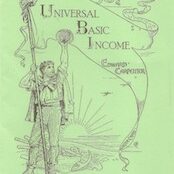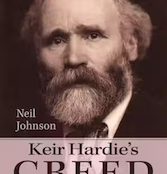4. War & After
The ILP in the 30s
Despite its numerical decline, the ILP remained a significant political force throughout the thirties. In addition, it retained a small but vocal parliamentary presence until Jimmy Maxton’s death in 1946.
But, if disaffiliation appeared to resolved the ILP’s dilemma about its role as a left group within the Labour Party, it posed a new and equally crucial question. What was to be its role outside the party? Squeezed between the electorally cautious Labour Party linked wit the unions, and the manipulative Communist Party linked with the international communist movement, the ILP found it had little room for manoeuvre.
Influenced by a pro-communist group in the ILP, serious consideration was given to affiliating to the Communist International. But the terms were found to be too stiff, just as they had been two decades earlier when the ILP tried to set up a alternative international movement (known as the Two-and-Half International) to build a bridge between reformist and revolutionary socialists. In particular, the ILP was unwilling to subordinate itself to Moscow’s demands.
At the same time, the ILP’s relations with the British Communist Part worsened due to the latter’s subservience to the Soviet Union. Like its counterparts in the rest of the world, the Communist Party in Britain took its political line from the Soviet leadership. That often meant rapid political changes to conform to changes in Stalin’s foreign policy. This was usually accompanied by wholesale abuse of others on the Left who disagreed. The Moscow trials and execution of former Bolshevik leaders further widened the breach between the two main left parties in Britain.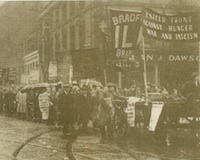
In spite of the difficulties facing the ILP in its new role, it continued with its active propaganda, including the open air meetings for which it was famous. It also retained an energetic youth section where a great many political activists were schooled.
The major campaigns of the decade had a strong ILP presence. The Unity Campaign, organised jointly with the Communist Party and Socialist League, the Hunger Marches, and the anti-fascist activities are among the better known examples. The ILP played a leading role in mobilising mass opposition to thwart the march by Oswald Mosley’s fascist through London’s East End, the heart of the Jewish community.
After the rise of fascism, first in Italy and later in Germany, the ILP actively supported the work of socialists from those countries. There was also a fierce debate about how to respond to the fascist threat while not siding with the imperialist powers.
Mussolini’s invasion of Abyssinia in1935 brought these matters to a head. Arguably, it led to one of the least honourable decisions taken by the ILP. At first, the ILP conference agreed to support independent working class action against Italy, to oppose its aggression, and to boycott the transport of arms and other supplies. Among the keenest supporters of this policy was a small Trotskyist group inside the ILP, led by the black writer, CLR James.
Jimmy Maxton and the parliamentary party strongly disagreed with the position. They argued that working class sanctions would be indistinguishable from other sanctions and would make war with Italy more likely. They made it clear that they felt unable to comply with the policy. As a result, the conference backed down and agreed to ballot the ILP membership.
As Fenner Brockway wrote: “I agreed at once without any illusions about the result. I knew it was inevitable that the vote would be influenced by the desire to retain Maxton and his colleagues than by the political issues.”
He was right. This led to a political attack on the ILP by the exiled Trotsky who until then, had seen it as a useful channel for his group’s activities. They then left the ILP, although CLR James continued to co-operate with the ILP in anti-colonial activities.
Spanish Civil War
In 1936, to the horror of socialists across the world, there was a fascist uprising in Spain against the elected republican government. Led by General Franco, the rebels were actively backed by Hitler and Mussolini and greatly assisted by the non-intervention of the British and French governments.
To begin with, people fought off the fascists with great courage but they were ill-equipped and the republican side was politically divided. It was also dependent for arms and other material help on the Soviet Union – and Stalin had his own very different agenda. Anxious to forge an alliance with Britain and France against Nazi Germany, he did not wish to do anything that would greatly upset them.
Obviously, developments in Catalonia and its capital, Barcelona, were particularly disquieting for him. A social revolution was taking place and society was being completely reorganised. Influenced by anarchist and socialist ideas, workers were running the factories and the local administration and peasants were collectivising the farms and taking control of the countryside.
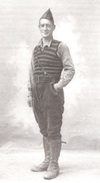 Stalin wanted to defeat the fascist but he did not want a revolution, fearful that if he was seen to support if he would fail to woo Britain and France into an alliance. So while he encouraged Communist-led International Brigades to fight, he was also at great pains to stifle the rest of the Left and bury the revolution.
Stalin wanted to defeat the fascist but he did not want a revolution, fearful that if he was seen to support if he would fail to woo Britain and France into an alliance. So while he encouraged Communist-led International Brigades to fight, he was also at great pains to stifle the rest of the Left and bury the revolution.
A small ILP contingent went to fight in Catalonia. Among the ILP volunteers was the writer Eric Blair, who was later to find fame under the name of George Orwell. The ILP gave particular support to the non-Stalinist, revolutionary Marxist workers’ party (POUM) which was ruthlessly suppressed by the Communists. Foreign sympathises of the POUM were jailed. Among them was Bob Smillie, chair of the ILP Guild of Youth, who died a prisoner after being arrested at the border.
Stalin succeeded in suppressing the revolution but by 1939 the fascists had won the war. Spain was to endure four decades of Franco’s oppressive rule. Tens of thousands of Spaniards lost their lives in the fighting and even more were killed when the fascists took control.
Labour Relations
It would be a mistake to suppose that the ILP’s disaffiliation from the Labour Party had ended the relationship once and for all. Not so, several attempts were made to re-open the links in the 1930s.
The most promising attempt began in 1938 with an initiative by the Labour Party leader and former ILPer, Clement Attlee. Both Labour’s executive, with a clear majority, and the ILP’s administrative council, with a narrow one, agreed the general terms of re-entry.
In supporting re-affiliation, Fenner Brockway argued that the ILP had changed significantly. He claimed: “when the ILP was in the Labour Party it had no fundamental philosophy or policy and could not act with a united purpose; but during its period outside it had developed a revolutionary socialist basis and its personnel, although smaller in numbers, had vastly improved in dependable quality; the ILP of 1938 was very different from the mixture of reformism, sentiment, utopianism and awakening revolutionism which characterised the ILP of 1932. This being so, was there not a great deal to be said for entering the Labour Party as a disciplined unit, regarding it not as a socialist party with a policy that commanded our consent, but as the class party of the workers and therefore the right and most fruitful field of activity?”
The ILP convened a special conference to decide its future. The meeting never took place. The conference was called for September 1939, the month that Britain declared war on Nazi Germany.
The two parties differed in their attitude to the Second World War as they had done to the first. Opposing involvement, the ILP saw it mainly as a battle between rival imperial powers and once again its members were imprisoned for refusing military conscription. During the war the ILP played a role in what became a broad current of radical dissent against Churchill’s coalition government and there was a revival of interest in its publications.
Actively supporting the war, Labour participated in the war-time coalition. And it emerged from the hostilities stronger, with a reforming programme, winning its first overall majority in the Commons in 1945.
After the War
Post-war Britain left the ILP in continuing decline, with the return of many of its leading figures, like Fenner Brockway, to the Labour Party. The ILP continued with its anti-colonial work, opposed the post-war Labour government’s use of troops in the docks for strike breaking, and participated in a European campaign to build a united socialist Europe.
But as it shrank so its hostility to the Labour Party increased. Although a minority of its members actively supported Labour in their localities, the formal position of the ILP towards the Labour Party really was sectarian. This purism was reinforce by those who recounted stories of left-wingers who joined the Labour Party to transform it but who were themselves politically transformed.
While the ILP continued to support a host of progressive campaigns during these years – particularly in the peace movement – it was inclined to indulge in pious resolution-mongering. Its libertarian outlook attracted people who were unhappy about the lack of tolerance and democracy on much of the left, but otherwise its politics became diffuse.
While the ILP almost sank below the political horizon in these years, it survived by a fine thread. This was due to the resources it had accumulated in earlier years but, more importantly, thanks to the loyalty and commitment of ILPers with fond memories of the party in days gone by and wished to keep something of that alive. The ILP has always been more than a political party. It was a political movement which valued socialist fellowship and this made it possible for it to renew itself.
In the late 1950s and early 1960s, there was a small but significant influx of younger activists from the anti-nuclear movement, and some former members of the Communist Party who were disillusioned after the Soviet invasion of Hungary in 1956. Unhappy about the lack of radicalism and democracy in the Labour Party and wary of the politics and practices of the far left, the new generation were looking for some kind of alternative. Whatever its faults, the ILP provided them with space to rethink their politics.
In doing so, they became frustrated with the lack of direction of the ILP which by now was a very weak organisation. They challenged its lack of perspective and, as they developed their ideas, they sought to turn the ILP outwards and to reconsider the relationship of socialists to the Labour Party. Support for this rethink also came from longstanding members of the ILP.
In 1974, after several years of debate, the ILP re-adopted a socialist commitment of the Labour Party in its Outline Perspective. In 1975, it changed its constitution to become Independent Labour Publications. On both occasions there were members present who had attended the 1932 disaffiliation conference. Indeed, there were some whose experience went back to before the First World War.
A few months after the decision to change the ILP’s constitution, the national executive of the Labour Party agreed that members of the ILP could join the Labour Party and vice versa. Not only did this end four decades in which the ILP had gone its separate way from the Labour Party but it opened a new chapter in the ILP’s history.
—-
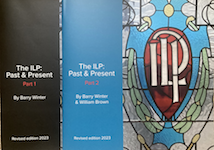 This is an extract from the original centenary edition of The ILP: Past & Present, published in 1993. The print version is now sold out.
This is an extract from the original centenary edition of The ILP: Past & Present, published in 1993. The print version is now sold out.
The latest revised and updated version, published in 2023 to mark our 130th anniversary, is available to buy in two parts from our publications section.

